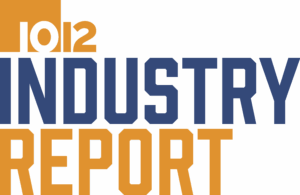I’m no anthropologist, but I imagine our ancestors didn’t make much of a distinction between tools and weapons. Their available resources were limited so most implements probably served both purposes. They used their same favorite rock to crack open a coconut or their rival’s noggin. That flat, sharp-edged rock was probably used for skinning a pelt as well as hunting or defending the clan. That rock was both a tool and a weapon.
 As our devices have become more and more specialized, there is more of a distinction between tools and weapons. We have bayonets and we have butter knives. Of course, specialized tools can still be misapplied. Misuse a hammer, knife, or even a car and now that tool is a weapon. There’s probably no limit to the ways you can make seemingly helpful tools into weapons.
As our devices have become more and more specialized, there is more of a distinction between tools and weapons. We have bayonets and we have butter knives. Of course, specialized tools can still be misapplied. Misuse a hammer, knife, or even a car and now that tool is a weapon. There’s probably no limit to the ways you can make seemingly helpful tools into weapons.
The same can be said for your safety policies. Your safety policies are helpful resources; an important tool to help protect your workers. But with any tool, the slightest misuse can turn it into a weapon. It’s all in how the tool is applied.
For example, your organization has a glove policy: Any time a person is handling material over 25 pounds, the worker should be wearing gloves to protect their hands from injury. The gloves, and the policy regarding their use, were put in place as a tool to protect the worker. When used as a tool, the policy is well communicated, easy to comply with, and coached for consistency. In other words, the requirement is clear and free from the “gray area” so many policies seem to have. We have gloves readily available so the worker has the material they need to easily adhere to the policy and protect themselves. When we see people working outside of the policy we coach to help people understand the importance of the policy to them personally. It’s not just a rule; it’s a valuable tool for the worker.
The shift from tool to a weapon can be subtle. In the interest of expediency, we often find ourselves just looking for compliance. Compliance cops and Monday Morning Quarterbacks can quickly weaponize a safety policy. The compliance cop walks around pointing out violations and checking “at-risk” boxes to justify their time in the field. No coaching, just “Hey, you’re supposed to be wearing gloves.” They roll up this “data” and put out a mass email at the end of the month saying “X number of glove violations; we need to make this a focus area.” Rinse and repeat.
The Monday Morning Quarterback (MMQB) is even worse. What they do is use the policy as a way to hammer the worker after an event. After there’s been a hand injury the MMQB will swoop in and say “Aha! The worker violated our glove policy. Nothing to fix, we need more compliance. Let’s punish the worker so everyone else knows we’re serious.” Never mind that the policy is unclear, the benefit is unknown, or the materials are scarce or insufficient. Never mind that the MMQB has given implied consent to NOT using gloves because he/she said nothing the other times they saw workers not using gloves. Those previous times didn’t result in an injury so “No harm, no foul. Nothing to fix. No coaching.” But as soon as an injury occurs, he/she breaks out the policy and beats the worker over the head with it.
We too often skip the important work of coaching to promote understanding why the policy is important and never ask, “What made it difficult for you to adhere to the policy?” so we can find those organizational gaps in our policy. The safety policy is a tool for protecting the worker. Like any tool, you must know how to use it, keep it sharp, and use it correctly.
This takes coaching when you see violations and not just collecting numbers like a compliance cop. This means finding out WHY a worker found it difficult to comply and fixing that problem; not just playing MMQB and using the policy like a blunt rock to crack the worker over the noggin.
Toolbox Talks offers quick insights and thoughts to use for your toolbox (tailboard) talks. Dave Sowers is a founding member of Knowledge Vine, a veteran-owned human performance training and consulting organization that strives to reduce the frequency and severity of human errors in the workplace. He has almost 30 years of experience in power generation and the utility industry. He is a veteran of U.S. Navy Nuclear Power Program and holds a bachelor’s degree in resources management and a master’s degree in both management and emergency management and homeland security.



